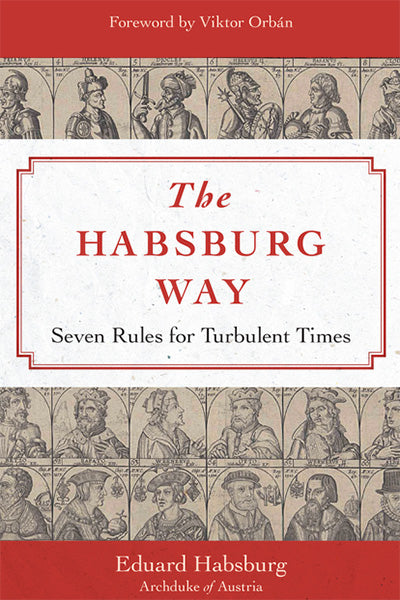More often than not, I read fiction. Yet I recently found myself perusing the pages of a noteworthy book from a remarkable individual. As the quote above attests, it contains truths needed in today’s world—or, really, in any time. THE HABSBURG WAY: SEVEN RULES FOR TURBULENT TIMES is a compelling, important, and, at times, poignant book that I highly recommend to readers from all walks of life.
There are many history books out there, including several that center on the Habsburgs. Yet you would be hard-pressed to find such a book told from the extraordinary viewpoint of The Habsburg Way’s author. Archduke Eduard is a member of this renowned historical family who not only has learned its values and “ways” from a young age—in fact, he is one of only fifteen Habsburgs today who is a member of the legendary Order of the Golden Fleece—but has met some of the famous figures who appear in this book. His background adds depth and color to the story, both in terms of the accounts themselves and simply the knowledge that you are hearing from a narrator who lived, and lives, this path. The unique perspective of the author contains facets that may be shaped by his roots, but that also are individually focused. To put it simply, his own sense of humor and engaging style are filled with personality, including delightful sidenotes.
Each rule in this book is unique. Yet woven throughout each may be found a thematic trend: a focus on Light. There is an emphasis on honor and justice, the importance of family, growing in your faith, treating others fairly—regardless of whether they are your subjects or employees—and, as a result, not only improving the lives of others, but finding inner strength because of it. There are also seemingly simple moments that bring the greatest meaning. In a jaded world of politics—politics not only in the literal meaning of the word, but how it might shape personal lives—this is truly inspiring.
THE HABSBURG WAY is the perfect antidote to a disinterest by some in history, for it allows you to travel back in time and “meet” a fascinating array of “characters” and circumstances. I highly recommend that schools consider this resource and allow an important historical family to come to life. Archduke Eduard Habsburg’s style and use of vivid and fascinating details in his storytelling allows it as such; indeed, history made “real.” Readers will encounter figures such as Blessed Karl and Zita, Venerable Magdalena, and countless others, inspiring in the way they chose a path of holiness and heroic virtue. They may even find favorite “characters” that inspire gushing of the ALL CAPS variety.
While there is much information presented, it almost does not feel like nonfiction due to that wonderful storytelling and engaging style.
As mentioned before, the author’s enthusiasm for the subject practically leaps off the page. He maintains a remarkably perfect balance between too much information and just enough to engage with readers who want more knowledge and provide evidence for his thematic purpose through support for the Habsburg “rules.”
The text is also exceptionally well-organized, which may allow it to serve as an excellent resource from which to look up quick information post-reading.
The context of the Habsburg rules should also be considered to promote greater understanding. It was “deeply impressed” on many of the Habsburg rulers to take their rule seriously. The relationship between the ruler and ruled was seen as a long-term relationship, not temporary. Those monarchs who succeeded in my book (and that of Archduke Eduard) ultimately viewed their rule in light of how they would be held accountable to God. Not all of the rulers were perfect, but the ideal was quite beautiful. To learn about the Habsburg monarchy is to learn the greater context for how famous figures in history grappled with difficult circumstances through adherence to their faith. The inner nobility emanating from such could then be at the center of who they were.
Inspirational role models in the Habsburg family will challenge you to be heroic amidst suffering, fear, and turmoil, to be the best version of yourself. We are presented with stories and people who faced difficulties different from our own—but, in the end, not wholly so.
And so, you, dear reader, may learn how to face these challenges without losing who you are. In fact, perhaps you will “become who you are” more fully as you carry your cross, recall your past, immerse yourself in the present, and ultimately delve into introspection.
Read full review at the Tumblar House blog:
https://www.tumblarhouse.com/blogs/news/7-reasons-to-read-7-rules-for-turbulent-times-the-habsburg-way

